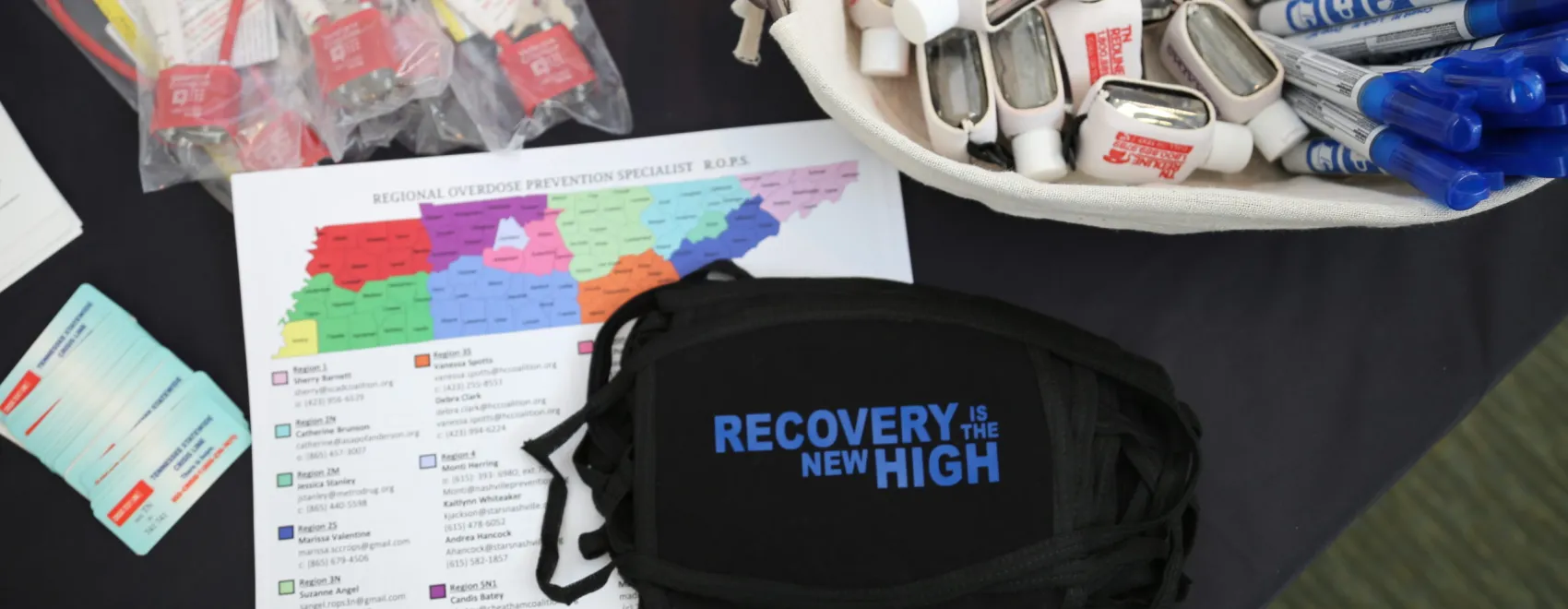You’re Not Alone
College students make up one of the largest groups of people who abuse alcohol and drugs nationwide, but help is available. At UT Southern, we promote a nurturing campus and community environment to ensure that all students in recovery can achieve academic and personal success.
What is recovery?
Recovery looks different for everyone. For some, abstinence from substances is the safest, healthiest choice. For others, recovery is a space to reflect on and change their substance use habit without judgment or pressure to quit altogether. Our goal is to honor all recovery pathways, acknowledging that each person’s path is unique and reflects their strengths and providing social support that focuses on hope and healing in the community.
Crisis Hotline
If you or someone you know is in crisis, call the Suicide and Crisis Lifeline by dialing 988.
Is my substance use reasonable?
Every person is different, but using this anonymous 6-question survey can help students evaluate if their substance use is within a reasonable limit.
Explore Help
The University offers anonymous educational programs through eCheckUp. If you need credit for program completion, complete the Electronic Verification of Completion at the end of the program’s feedback pages.
Off-Campus Resources
Meetings & Resources
Tennessee REDLINE
Student Resources
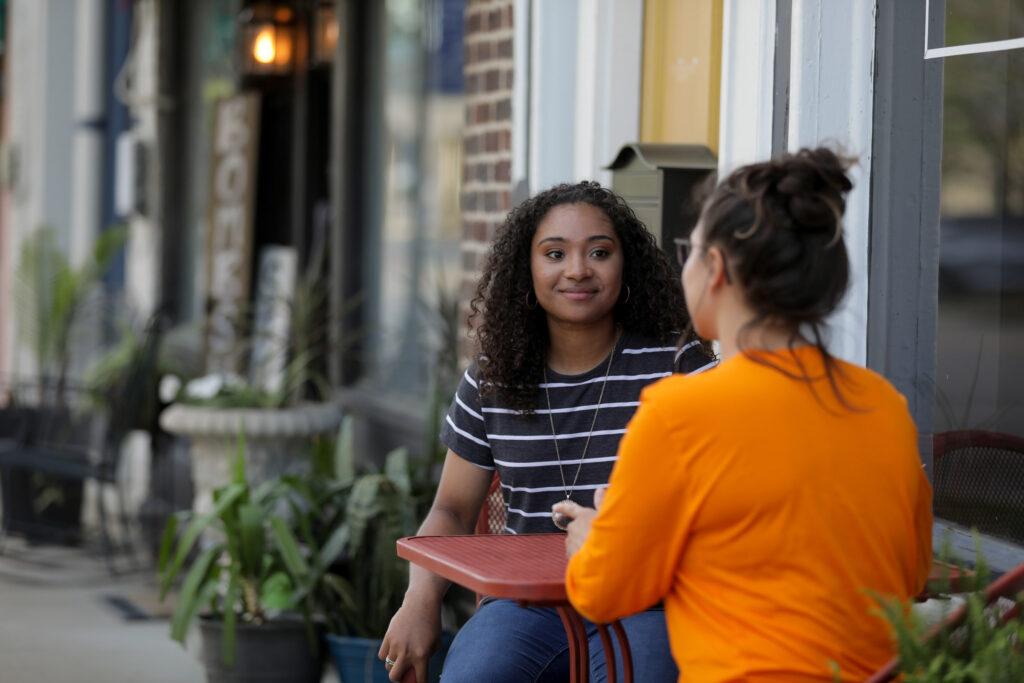
Individual and Group Counseling
Free, confidential counseling is available through the University. Text 844-986-6946 for an appointment.
Student substance recovery groups meet Tuesdays at 6:00 PM CST online on Zoom. Click below to join. (Zoom Meeting 922 1201 5826). No RSVP is required.
Recovery Allyship
Many of us know and love someone struggling with substance misuse and/or someone in recovery. Addiction affects the whole family, team, and support system. Meetings for students affected by a loved one’s addiction provide education, resource navigation, and ongoing support needed to address substance use disorder healthily and constructively.
Questions about supporting someone in recovery, or loving someone through their substance misuse, are welcomed via email.
The Division of Student Affairs is happy to support students, faculty, and staff in recovery allyship efforts. Please contact us to be trained in one of the roles below. If you or someone you know is interested in a recovery supportive training or certification not mentioned here, please reach out!
Recent Events
Athlete Mental Health & Substance Use
Our student-athletes manage extra challenges balancing life, stress, and expectations in and out of the classroom. In addition to training our athletic staff on supporting students, we’ve been hosting athlete-specific events around mental health and substance use to help our athletes manage priorities and stay physically and mentally healthy.


Recovery Academy
UT Southern is proud to be a part of the University of Tennessee System’s commitment to supporting substance recovery in our students. We support Recovery Academy events at all our UT campuses and are grateful for the partnership of the TN Dept. of Mental Health & Substance Abuse Services’ Collegiate Recovery Initiative.
We were proud to host TDMHSAS and the UT System partners in February 2022 for our own Recovery Academy, and again in August 2023 for our Institute for Mental Health Support.
August 2022’s Institute for Mental Health included Recovery Ally training for our faculty and the entire athletic and student affairs staff.
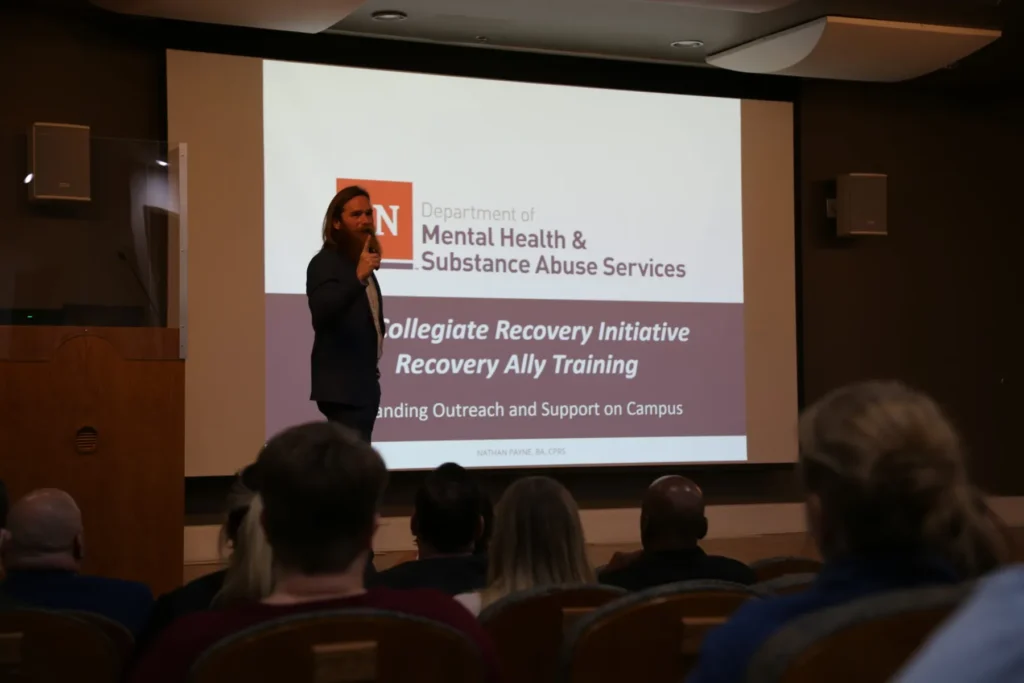
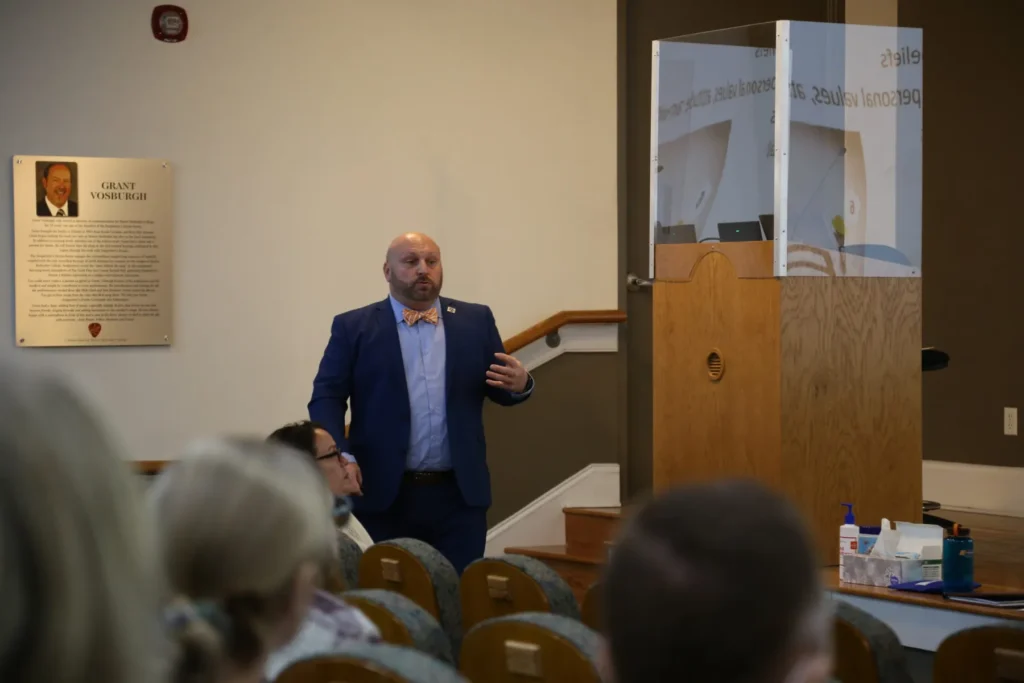


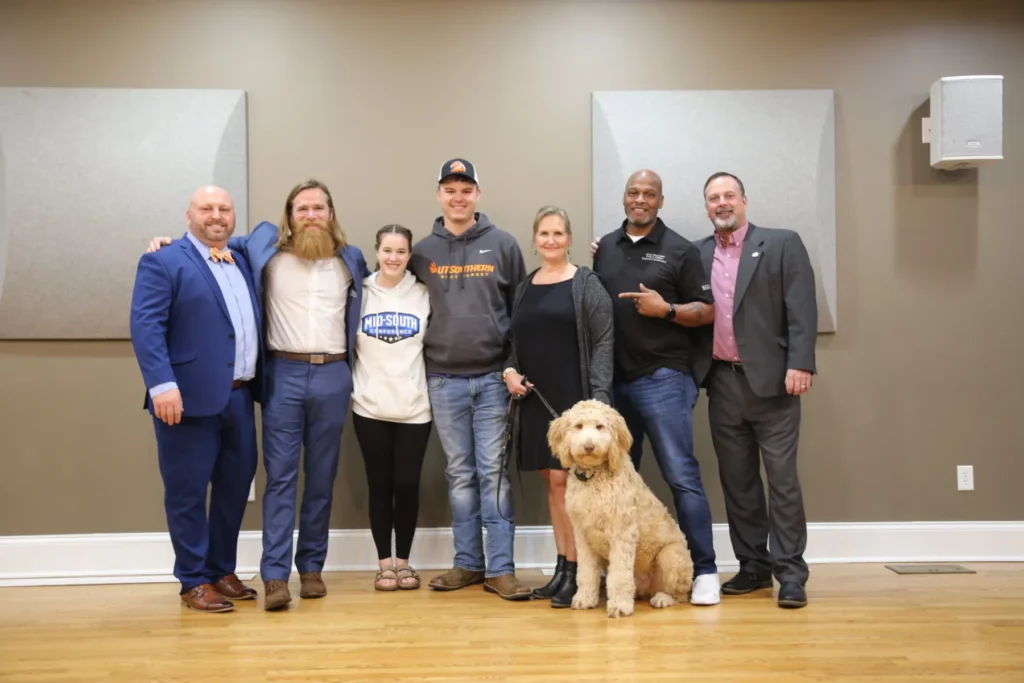
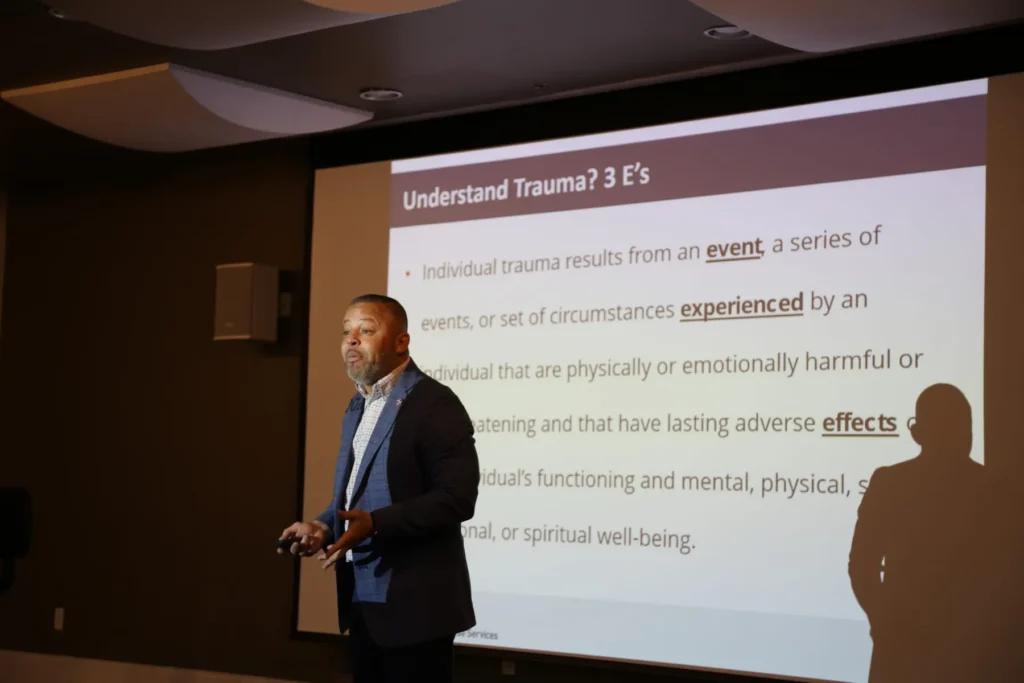
Cannabis Tolerance Break
What is a T Break?
If you use cannabis, you should take a tolerance break at some point. Like anything else, your body builds up a tolerance: you need more to get high. A t-break could help you save money and also keep balance.
The challenging news is that if you partake most days, a true tolerance break should be at least 21 days long since THC takes around three weeks or more to leave your system. (THC bonds to fat, which is stored in the body longer.)
Below you’ll find the T Break Guide developed by Tom Fontana at The University of Vermont. A printable version is available here.
Hello. And welcome.
I created this guide because people would tell me that they only lasted a few days when they set out to take a t-break. Sometimes they felt ashamed because it was harder than they thought. There is no need to feel bad, but it can be hard to take a break. People usually find some aspect of getting high beneficial. Cannabis causes less harm than some other drugs and creates less cravings. For those very reasons, ironically, some people find it challenging to find a balance with cannabis: they might think that cannabis has no harm and no cravings. Everything has pros and cons. And cannabis, like a lot of things, can create dependency.
A tolerance break is a good time to re-evaluate balance. If you want to stop completely, continue the break. Others may return to cannabis and use it as a support while reducing their tolerance and finding a better balance.
Either way, a little support is a good thing, and our research at universities across the US shows that people who use this guide are more likely to complete a tolerance break. I hope you find it helpful, but I welcome your feedback.
Tom Fontana
University of Vermont
Hello. And welcome.
Timing
Pick a date to start your t-break. A 21-day stretch with some stability would be ideal. But there may never be a perfect time, and that’s ok. Give it a little thought, but pick something.
Try to pick a date that is sooner than later- today even. Try not to have a big lead-up. (That leads to procrastination.) If you have a routine, don’t increase it before your t-break.
Stash and paraphernalia
Don’t have any cannabis around when you start. The closer it is physically, the more we desire to do it. It’s hardest if you can smell or see it, so get rid of it.
Same with paraphernalia. If you are quitting, get rid of it. If you are taking a pause and you have some nice glass, hide it away. (Or let a friend hold on to it.) Consider this a tidying up. If you have cheap stuff, throw it away.
With a little help from my friends
Identify who may be a support and tell them that you are taking a t-break. If other people in your life partake, they may even want to join you on this break. Most friends will understand you are taking a t-break and will support you. But there may be some people in your life who will question you and make this more challenging. Some friends may try to get you back in the circle. Your changing causes low key discomfort in them. They will want you to return to the routine that works for them.
Like putting away your piece, you may have to avoid them too.
A note about tobacco
Some people like to mix tobacco with cannabis. In many places, tobacco costs less than cannabis, so it saves a little money. And, since tobacco is not great for our health, they might like not using it as much. Those two things are positive. But the combo also creates some not-so-good things.
Cannabis is a bronchodilator: it opens up the lungs. When inhaled together, the nicotine goes deeper into your lungs. (This is why people often cough when used together, even if they don’t when used separately.) The head rush that people experience may be asphyxiation: a temporary lack of oxygen. Some people like this feeling so much that they want to experience it repeatedly.
If you combine the two occasionally, you will probably be fine during this break. But if you combine the two often, you might also experience nicotine withdrawal. If this holds you back from a successful tolerance break, you might consider nicotine abstinence supports like a patch or gum.
A note about CBD
People have asked me about using CBD during their break. I would say two things:
- It is your break. I support you in doing what’s best for you.
- Try to limit or abstain from CBD during your break.
Here’s why:
Tolerance is not just chemical; it’s behavioral. Although a person could probably use CBD during a break and still reduce their chemical tolerance to THC, that person might miss out on other aspects of tolerance.
Behavioral tolerance includes the habits, routines, and rituals we build into cannabis use. These, in turn, impact our thoughts, cravings, and even the high experience. As chemical tolerance increases, we increasingly rely on these behavioral aspects for enjoyment. It can be helpful to take a break from these to gain perspective.
Here is my advice:
If possible, don’t use CBD during a break. However, if you struggle with withdrawal or other experiences that would keep you from taking a break– and CBD is the only thing helping with that… use it.
If you are going to use CBD, try these two practices:
Only use CBD during the early days when the physical stuff is hardest, then try tapering off. Second, when you use CBD, use it in the most boring way possible. Take drops, an oil, or a simple edible. (Don’t use CBD flower as a replacement.) Taking these steps might help reduce your behavioral tolerance.
“The first days are the hardest days.” – Grateful Dead
Some people can go from always being high to a T-Break with no issues.
The rest of us humans will experience some readjustment and discomfort: perhaps appetite, sleep, anxiety, irritability, etc. This guide can help and support you. Together, we’ll address each of these things.
The hardest moments will be the times of day when you usually partake. That’s when your brain and body expect it. You’ll get through it. It helps to be busy.
Perhaps you’ve been wanting to work out or meditate more. Perhaps there’s a show you’ve been looking to watch or a podcast you haven’t had the time for. Maybe there is a hobby you’ve been wanting to get better at. Now’s the time. Move, watch, learn, practice…whatever. Do something.
Consider having things to do that you can invite friends to. If someone invites you to smoke, invite them to a movie. It is a good idea to have things planned to do with friends. And it is a good idea to have something planned for when you are by yourself.
Consider having things to do that you can invite friends to. If someone invites you to smoke, invite them to a movie. It is a good idea to have things planned to do with friends. And it is a good idea to have something planned for when you are by yourself.
“Now I lay me down to sleep…” – a bedtime prayer (also, Metallica)
Lots of people who partake do so before bed. THC in your system during sleep impacts your sleep cycle. (More on that later.) On the upside, being high before bed helps people fall asleep. Unfortunately, some people come to have difficulty falling asleep without it.
This tolerance break offers a chance to create new routines. “Bedtime” is a concept you probably have not considered in years. But falling asleep is as much about your bedtime routine as it is about being tired.
The quote above is mainly because I wanted to reference Metallica. But it may also conjure some old-timey notion of a kid going to bed. Kids tend to sleep well with a routine—pajamas, bath, books, and bed. The whole sequence is designed to tell the body that it is time to sleep.
If you are having trouble falling asleep, please take a look at your routine. If you don’t have a bedtime routine, you can make one. Here are a few tips.
- Wear pajamas every night (fancy footy ones or old comfy clothes.)
- Do something involving hot water: a bath, shower, face-wash, or cup of herbal tea.
- Use the blue-light lifter on your screen. (Blue light is a stimulant.) And turn off devices 30 minutes prior.
Sleep experts say your bed should be used only for sex and sleep. If you live in an apartment or dorm, your bed often becomes your table, desk, and couch. If sleep remains an issue, consider how you use your bed. It might help to stay off your bed until it is time to sleep.
“If you want a quality, act as if you already had it.” – William James.
Some people experience a lack of appetite when they cut back on cannabis. This is more likely if you often get high before meals. Cannabis tends to stimulate appetite. When used regularly, your appetite may depend on cannabis to stimulate it. Here are a few tips….
Act as if you are hungry and eat on a schedule. (Acting “as if” is a concept from Adlerian psychology, poached by Cognitive Behavior Therapy. It’s the idea of “fake it till you make it.” You act as if something is true until it becomes true. The fact that this works shows the power of confidence…and that confidence can be created.)
Try not to skip meals. Eat at regular times and in average amounts. But don’t beat yourself up about not finishing something. (Eating something is better than nothing.)
Even though you may not feel hungry, your body still needs food. You will feel more tired, irritable, and anxious if you don’t eat. So, act as if you are hungry. Your appetite will return.
Note: cannabis stimulates appetite…until it doesn’t. After years of partaking, a small subset of people develop severe stomach pain called Hyperemesis Syndrome. This is likely due to a buildup of THC. Hot water can help with the pain at the moment. They should pause on weed and consult a doctor.
“Me can’t get enough of these.” – Cookie Monster.
Maybe cannabis was a big part of your life. Maybe not. Either way, it did something for you. Perhaps it helped you feel less anxious or less bored. When taking a T-Break, many people initially feel more bored/depressed or more anxious/irritable.
It is a triple impact: you are avoiding a thing that once helped, you may be experiencing withdrawal, and you’re dealing with cravings.
These first days are hard. Today—Day 4—may be the hardest. Some people quit at this point. Don’t. It will start getting easier.
Until it does, try these things:
When you are feeling an intense craving, try to distract yourself:
- Busy your body: change location, do laundry, exercise, move
- Busy your mind: blast music, draw, create, call/text someone
When you are feeling moderate to low cravings, try to center yourself:
Plan: no blame, no shame, plan for the next craving.r.
Mediate: ride the craving, notice it, and let it go.
Reflect: what are you feeling? Physically what is happening?
Identify: look for patterns in cravings (time, place, feelings, etc.)
Learn: what helps you ride them out?
“Sleep is the best meditation.” – Dalai Lama.
We sleep in stages with 90-minute cycles. REM sleep- when we dream- is a light stage. Deep sleep is physically restorative; REM sleep is mentally restorative.
THC, like alcohol, brings people to deep-stage sleep quicker. That is why people feel like cannabis helps them fall asleep. But THC holds people in a deep sleep all night. Physically, this is reasonably restorative. The problem is that THC disrupts REM sleep. Since THC keeps people in a deep stage-and, REM happens in the light stage-REM cycles get skipped.
If you smoke nightly, you go into REM rebound and dream early and inefficiently. Many people who get high before bed think that they do not dream. When starting a t-break, you may experience vivid dreams: that’s you coming out of REM disruption. It will settle soon.
REM disruption caused by cannabis likely impacts your daytime as well. The top 3 effects of REM deprivation are 1) irritability, 2) anxiety, and 3) feeling tired. These are the same things that many students and professionals report getting in the way of success.
People often describe feeling less “cloudy” when they take a break. That is due to better sleep and REM. Perhaps you are feeling these positive effects too.Learn: what helps you ride them out?
“The things you own end up owning you.” – Fight Club
There is a difference between ‘getting high’ and ‘being high.’ Being high is what you experience after you partake. It is chemical.
Getting high is the experience before and as you partake. It is personal and perhaps social. It develops over time. People create their routines and preferences. Techniques can turn into art forms, and people begin to feel like a master of their craft. Since we all need to feel mastery, this can be hard to give up.
Consider if you have a ‘smoke-hole’: that spot where you always sit, that little table with your stash, grinder, and favorite piece. A space like this has gravity. Some people get sucked in so far that their world shrinks to six feet wide, revolving around their mini fridge, a remote, game controller, speakers, and setup.
For some people, cannabis becomes an identity- their brand. They might be the connoisseur who learns every stain. Or that guy who takes the biggest bong rip. Or the girl who rolls the best joints. This is all quite silly… but pretty real.
If you enjoy partaking, when you list the things you are best at in life, cannabis probably shouldn’t be in your top 3. We get good and what we practice. When you get high, you spend your time on that, not other things.
Measure how wide your world is with the time and perspective you gain while taking a break. Consider what routines are worth returning to and which are better left behind.
“Treat yo self” – Parks and Rec.
Week 1 complete!
You have accomplished what most people consider the hardest part. Many people feel like it gets easier from here. Well done!
As we addressed yesterday, getting high requires time. It also takes money. Consider the money you’ve saved this week not smoking. It is now time to spend it: treat yo self.
After these 21 days, if you continue your break, you can save that money for something big. But during this tolerance break…spend it.
What are you going to spend it on? Music, movies, food (now that your appetite is back?!) Treat yourself to fancy pajamas for your new bedtime routine. Whatever. It’s your call.
Try to reflect. Draw or write about your experience this past week if it is your style.
“Sometimes when I’m high, I feel high in reverse” – Juice WRLD.
In general, the withdrawal effects from a substance are the opposite of the effects that the substance creates. For example, caffeine stimulates the brain… so withdrawal creates headaches. This is also true with side effects. A side effect of opiates is constipation… withdrawal involves pooping (a lot).
Consider what it feels like when you are high. If being high makes you feel more relaxed, you might feel more jumpy or irritable right now. If being high felt calming, you might now be feeling more anxious. And, if, as a side-effect, being high helped you feel more connected to people, you might now feel lonelier. This week, we are going to look at these.
One other thing: there seems to be something cumulative about THC. We know that it builds up in our system. There appears to be a point at which cannabis stops working for some people…or even when they report getting high in reverse. (Feeling anxious when high, even when that never happened before.)
This may come after a long period of heavy use. It may feel as if something has changed. Cannabis goes from being a special occasion to routine maintenance. Cannabis begins to have less and less impact, then none, and then, maybe, the opposite.
If that is not your experience, I am glad. But with the increases in THC concentrations, this is something to keep in mind. It invites partaking in moderation. It suggests that a true tolerance break (like you are doing now) is good..
“But I’m aggravated without it
My saddest days are without it
My Saturdays are the loudest
I’m blowing strong” – J Cole
Since starting this t-break, you might be experiencing disruptions to your sleep, appetite, or mood. Just one of these things would make someone irritable. But perhaps you have experienced a few or all of them. You may be feeling more irritable.
It is not comfortable… but you’re OK. If irritability is not gone already, it will likely be gone soon. Go easy on yourself. (If you’ve been a jerk to friends, you can apologize.) You’re good. You’ve got this.
Of course, only some experience the same things. If some of the themes in this guide do not apply to you, feel free to take anything that works and leave what does not.
Please feel free to hold on if you feel irritable or overwhelmed. To keep with the J Cole song from above, he says, “Meditate, don’t medicate.” There are lots of types of meditation: the right one will work. The wrong type may unsettle you—experiment with guided vs. free, movement vs. still. Check out the UVM Mindfulness Soundcloud.
Also, consider trying to locate emotions inside you. We hold feelings in our bodies. Where do you keep anxiety? (stomach, head, neck, somewhere else?) Where do you keep tension and irritation? (jaw, shoulders?) Knowing the physical location of our feelings helps us recognize and exist with them.
“My attraction to drugs is based on an immense desire to annihilate awareness.” – Anaïs Nin.
Anxiety is the worst. Cannabis seems to help. Research is starting to tell us more about how. Unfortunately, research also seems to show that when people consistently use cannabis before their brain is done developing (around age 27), it appears to worsen anxiety and depression in the long run.
When anyone starts using cannabis regularly, they become more sensitive to anxiety when not high. The same amount of anxiety that they once tolerated now feels overwhelming. They are then more likely to get high again to deal with it. This is understandable. It just tends to make things worse in the long run.
It can be hard to sort out the extent to which cannabis helps with anxiety and the extent to which cannabis worsens it. This anxiety is further complicated by withdrawal. For example, say someone sets out to take a one-week tolerance break and gets anxious around day three, starts smoking again, and feels better. They might view that as proof that cannabis helps with anxiety: “When I stopped, I felt anxious; but when I started again, I felt better. Cannabis cured my anxiety.” But anxiety itself is a withdrawal symptom from cannabis. What they demonstrated was dependency.
It is worth considering all this for yourself. It may be that cannabis is helping; it may be hurting. Most likely, however, it is a bit of both. Figuring out this mix will help you find and maintain balance.
“There are no boring things, just boring people” – Grandma.
Grandma was harsh when she said that… and wrong. There are many boring things out there, and cannabis can help make boring things more fun. It is worth understanding how.
Being high makes boring more interesting by lowering your sense of what is interesting. This reaction can occur with food. Food often tastes better when people are high, but we act as if getting high changes the molecular structure of the food. We act as if we’re the same, the food has altered, and as if we are the same and the boring thing is now more fun. But things have not changed: you’re just high.
This distinction does not matter on any single occasion: if it tastes better, that’s great; if it is less boring, that’s fun. But boredom- as a mental state- is essential. It can spur creativity, imagination, and problem-solving.
As getting high becomes the solution to boredom, we become less skilled at learning from boredom and dealing with it. Getting high too often makes it harder to tolerate the regular routines of life.
If you return to getting high after this break, you might occasionally devour a meal high or find a not-so-funny movie hysterical. Enjoy it but try to avoid using cannabis as a cure for boredom.
“It’s the loneliness that’s a killer” – Henry Samuel / Seal.
Irritability, anxiety, and boredom all have a complicated interplay with cannabis: it can help reduces these in the short term but makes them worse in the long term.
Loneliness is not connected in the same way. Cannabis does not directly cause or cure it. But I wanted to address loneliness here because it is so real for many of us. Indirectly, cannabis may have helped keep loneliness away. During this tolerance break, especially when the noise of irritability diminishes, you may feel loneliness creeping in.
Loneliness is a hard feeling to describe. It is connected to depression, but not the same thing. Anxiety may be a fear of exposure: we might be seen and judged. Loneliness may be a fear that no one will see who we are and that no one would want to.
Cannabis may help some people bond. Mostly we feel good about this. But occasionally, we start to question if anyone knows us or if anyone cares. Some of that may be paranoia from cannabis- you may just have been too high. But some of that is doubting the authenticity of those connections. (We will talk about ‘connection’ in Week 3.)
You are not alone. Not everything is fake. But, like anyone, you could stand to strengthen and deepen your connections a bit more. While you’re doing this t-break, it is a great time. Your authenticity (in your beauty and flaws) makes you real to others. That is the heart of connection and the antidote to loneliness. Try and let yourself be seen.
“Write drunk, edit sober” – Hemingway (though probably not)
The quote above is attributed to the great writer, Ernest Hemingway. He probably never said it but it’s a great line.
Interestingly, it did not apply to him. Although Hemingway was known to enjoy a drink, his friends, family, and scholars, all say he did not write drunk. But this notion persists, for Hemingway and beyond, because there is a myth about drugs and creativity.
Being high has long been associated with being more creative. Perhaps that is true for some people. Some artists may make better art when altered by a placebo (simply believing it may make it true) or by chemical alteration (the brain does operate differently when high).
Others do not. Sometimes artists listen to a recording of the music they played while high- and what felt like connection and improv while high- turns out to suck when heard sober.
There is no doubt that substances alter reality, and this connects to creativity. But the myth that someone can get fucked up, pass out, and will wake up with a hit (from Keith Richards to Chance the Rapper) dismisses the talent and hard work that art necessitates.
I’m not going to speculate on the true source of creativity. Nor will I dismiss the connection of altered states to it. But art takes talent, and skills enhance talent. So, if you are into creating… get to work on your skills. This t-break is an excellent time to do it (like we established on Day 1: Stay Busy).
Challenge: Be creative right now. Doodle, color, write lyrics, anything…
“$ave dat money” – Lil Dicky
Week 2 is complete!
Time to celebrate. There will be a time for the sage advice of Lil Dicky to save. But for now… spend it.
You may want to cook a meal for friends and play them a track off your new mix tape that your creativity and hustle produced. Or maybe you want to celebrate alone. That’s fine. (Alone is not the same as loneliness. Alone can be wonderful; loneliness is what sucks. Appreciating being alone is usually a good sign.)
It’s up to you. Enjoy!
Reflect. If it’s in your style, take some time to draw or write about your experience this past week.
“Avoid using cigarettes, alcohol, or drugs as alternatives to being an interesting person.” – Marilyn vos Savant.
Have you ever heard someone talk about alcohol as a personality in a bottle? Or say they are funnier or better at flirting or dancing when drunk? That’s outsourcing.
We attribute the positive effect we feel inside to something outside of us. With cannabis, it is less common, but it still happens plenty. We act like it is the alcohol that knows the jokes or the dance moves. We act as if a substance miraculously grants us previously absent skills. That’s not what happens.
When someone describes a substance as making them feel “whole,” “loved,” or “comfortable in their skin,”- those are flags for addiction. It does not mean they are guaranteed to have a problem, but as humans, if that’s the only time they feel good, they will always want to do it.
In a less intense way, when someone feels like a substance makes them a better version of themselves (insert ‘happy,’ ‘relaxed,’ ‘funnier,’ etc.), they will likely want to use that drug for those reasons. This is something worth paying attention to in ourselves.
The problem with outsourcing is that the drug gets all the credit. We end up thinking that alcohol made us funny or that cannabis made us insightful. We believe we are better off altered, which diminishes our self-worth.
But those are your jokes, your thoughts, and your dance moves. The substance just gave you an excuse (and, therefore, the confidence) to try them. You deserve the credit. Own what’s yours. Stop outsourcing.
“Knowing others is wisdom;
Knowing yourself is enlightenment” – Lao Tzu
This is a warning for all cynics: I’m about to say some things that may be affirming.
As a counselor, I’ve talked with hundreds of people. The more I do, the more I come to respect people. We all make mistakes. (In fact, some of us do many dumbass things.) But it is rare to find a person motivated by evil. Hearing people’s stories means witnessing people’s struggles and strengths.
You should know your own story. You should see your strengths and struggles. Yet in an unhealthy manner, many of us are disconnected from ourselves. That is no accident. There are systems in this world designed to create disconnection: patriarchy, supremacy, poverty, etc.
However, the hard truth is that it’s on you to see and fight those systems. And it is on you to discover and love yourself.
Life can be exhausting. People may use substances to escape. Some substances whisper escape; others scream it. And at first, with moderation, drugs can be an escape. But misuse is always a trap. Misuse recreates the systems and cycles that disconnect people from themselves and others. Avoid misuse. Do the work of knowing yourself. You are worth it.
“Any time someone gives you drugs, the purpose is to subdue. Always. Whether it is from a dealer, a friend, your mother…or your government.” – Northern Adams
I’ll never forget this particular conversation that I had with a student. She talked about why she loved being high: it allowed her to escape into the dream version of her life, which her real life was so far from. As a child of immigrants who sacrificed so much, she felt an obligation to fulfill their dreams for her life. Getting high was her escape from the life path that she felt stuck on.
I could see the pressure of her situation and had no problem understanding why she would want cannabis’ escape. Then she shared her conflict: she was beginning to realize that cannabis’ temporary relief made her current path just bearable enough, which caused her to avoid the more challenging path toward her actual dreams.
Being high allows some people to live in their private world. Some of this is OK. But too much, too often, it feeds disconnection. There is a difference between relief and self-medication: it’s the timing.
If life has made someone walk across hot coals, let’s not judge them for using medication afterward to tend to their wounded feet. But if someone is still standing on the hot coals, the misuse of drugs will decrease their ability to find a way off.
I’m not suggesting that your life- or your feet- are on fire, but for some people, this is real. No judgment from this end, but consider the degree to which cannabis (or any drug or behavior) is aiding you in pursuing your dreams or subduing you with false escape.
“Gunna keep on trying
Till I reach my highest ground” – Stevie Wonder
Infinity exists in multiple directions. There is the infinitely large and the infinitely small—an infinity above and an infinity below.
Below us is the earth. Our roots stretch out and anchor us. They grow and connect us to others. Above us is the sky. Our hearts and minds can connect us to infinity above.
Do you believe in that infinity?
(Forgive me if not. Many folks believe in some version of that infinity: the energy around us, God, or spirits. I am not assuming that because you used cannabis and were interested in a tolerance break, you want a guide to enlightenment. But it is worth addressing here since there is a power in connecting to something greater than ourselves.)
This theme isn’t so much about cannabis. It is more about you and the connection to something inside, above, and all around you. Your connection to this infinity is well worth contemplating:
What activities and relationships support you in this?
When do you feel most connected?
Is there space in your life for quiet and reflection?
“I don’t care about anyone not liking me,
you bitches barely like yourselves” – Cardi B
Yesterday’s theme of connecting up was a bit metaphysical. Today’s theme is more grounded.
We need a connection to the people around us. Those connections are roots that feed, anchor, and secure us in a storm. We grow connected to the people who are there for us when we need them.
Cannabis is one way to make connections with other people. But how can we know the difference between real friends and weed friends?
If those connections grow beyond cannabis and become grounded in something deeper, then those are true friends. If those connections do not extend past the cannabis, those are weed friends.
Take a look at your friendships. Do you hang out with people who don’t use cannabis? Consider how you spend time with your friends who do. If you do many things together- talk about many things, and sometimes get high together… those are likely real friends. However, if you mainly get high together- talk about how high you are, how high you’ve been, and the next time you’ll get high… those are weed friends.
Who have you felt connected to during this t-break? That should give you some sense of who is truly there for you. You can use that info.
“Tomorrow belongs to those who prepare for it today.” – Malcolm X.
Almost there.
Each day was a theme about what might come up during your tolerance break. We moved from the immediate to the future. We went from problems to possibilities.
How’d it go? Were there themes in this guide that helped? Other themes that fell flat?
As a recap, take some time to think about how this process went for you. Revisit themes that might have been a hit or miss. Are they still?
What next? What was your original purpose?
- If it was to reduce your tolerance…you’ve done it.
- If it was to see if you could do it…you’ve done it.
- If it was to see how you felt without THC…how do you feel?
(If it was to get clean for a pee test…you are likely good, but if you were a heavy daily partaker- you might need five weeks to be completely safe. The exact science still eludes us.)
It is a good idea to make t-breaks part of your routine: a weekend every month or a month every year. As a community, I hope to promote this aspect of balance. Take a moment to plan your next break now.
“You who see, go tell the others.” – Audre Lorde.
Congrats. You’ve taken a successful t-break!
Give yourself some credit for doing this. (Like…not too much credit: you took a tolerance break- you didn’t save the whales.) But for real–it is not easy to do. Well done.
Before you partake, please visit the last page for a few tips.
I hope this guide was a help to you. Please consider giving feedback:
- If the guide helped, then I would love to hear from you. Let me know what worked.
- I’d love to hear more from you if this guide were a miss. Let me know what bombed. We can make this better.
Like most things, it could be a mix of both. Let me know your experience: tom.fontana@uvm.edu
Thank you. Be well.
You Are Not Alone
If you or someone you know is in crisis, call the Suicide and Crisis Lifeline by dialing 988.

